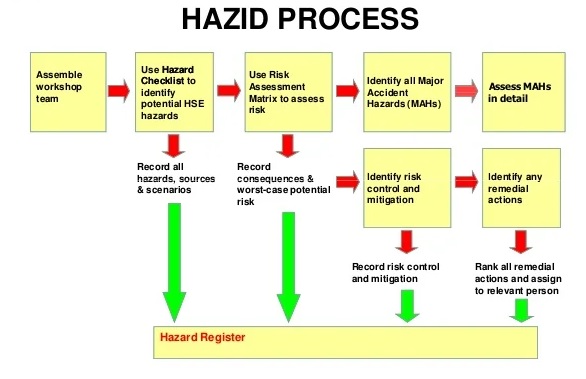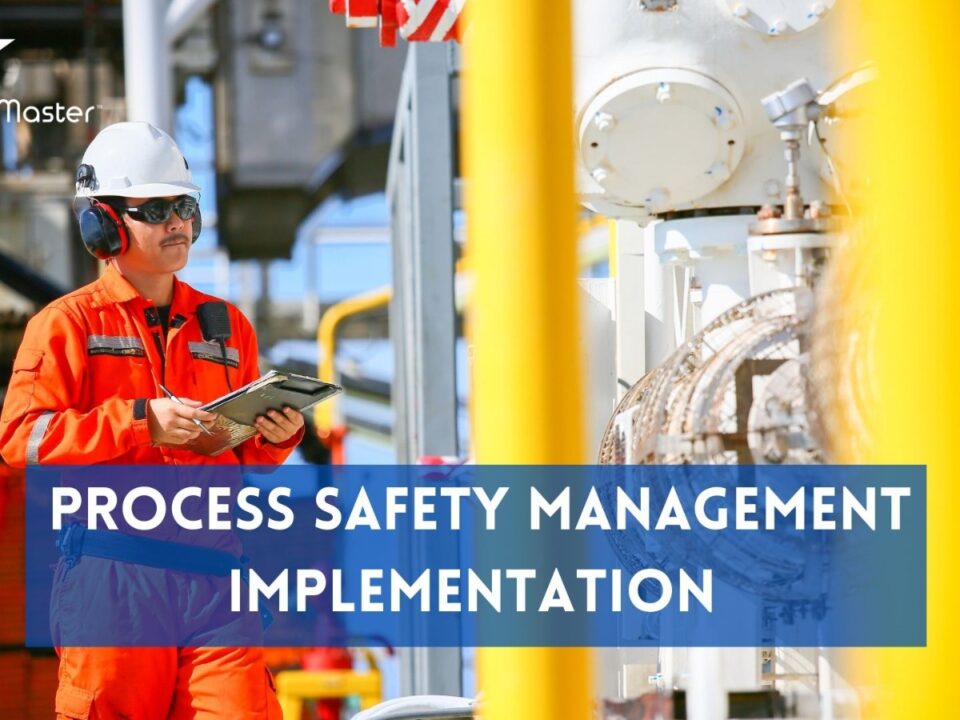Key Elements of a Successful HAZID Study in the Oil & Gas Industry

How to Drive a Positive Safety Culture Transformation with Behavior-Based Safety Programs
May 29, 2023
Exploring the Different Classes and Zones of Hazardous Area Classification
May 31, 2023Key Elements of a Successful HAZID Study in the Oil & Gas Industry
Imagine working in the oil and gas industry, where every task can be hazardous and life-threatening. The exploration and production of these resources require a great deal of expertise, technical know-how, and safety measures to reduce risks. Every day poses new challenges as the industry strives to meet the world’s energy needs while protecting their employees and preserving the environment.
A Hazard Identification (HAZID) study is a crucial aspect of risk management in the oil and gas industry. It is an essential tool that helps identify potential hazards that may arise during the production cycle, assess their risk levels, and recommend practical steps to mitigate them. In this article, we will discuss key elements of a successful HAZID study in the oil and gas industry that can minimize risks while ensuring operational efficiency.
Understanding the Oil & Gas Industry
The oil and gas industry is one of the most important sectors in the global economy. This industry is involved in the exploration, production, transportation, and refining of crude oil and natural gas. The oil and gas industry has a significant impact on several other industries such as transportation, manufacturing, construction, and agriculture.
The oil and gas industry is characterized by complex geological formations that present various operational challenges during exploration and production. Furthermore, several risks are associated with this sector due to its hazardous nature. The risks range from natural hazards such as earthquakes to man-made hazards such as explosions. Therefore, it is essential for companies operating in this sector to identify these risks early on to manage them effectively.
As an expert in this field, I can tell you that understanding the oil & gas industry’s complexities is crucial for conducting an effective HAZID study. It requires knowledge of the various operations involved in oil & gas exploration and production activities. Understanding how each operation works will help identify potential hazards associated with it more easily.
In the oil and gas industry, safety is a top priority. The hazards associated with this industry are well known and can be catastrophic if not properly managed. This is where HAZID (Hazard Identification) studies come in. The objective of a HAZID study is to identify and analyze potential hazards within a project or operation, evaluate the risks associated with these hazards, and determine appropriate measures to mitigate or eliminate them.
A successful HAZID study is critical for ensuring the safety of personnel, protecting the environment, and safeguarding assets. It provides an opportunity to identify and assess risks before they become incidents that could result in loss of life or damage to property. In addition, it can help avoid costly delays by identifying potential issues early in the planning phase and addressing them proactively. A thorough understanding of potential hazards allows for better decision-making when it comes to risk management strategies, including appropriate controls and safeguards. Overall, a comprehensive HAZID study ensures that all necessary steps are taken to reduce risk to an acceptable level while still achieving project objectives.
Key Elements of a Successful HAZID Study
A Hazard Identification (HAZID) study is an essential process in the oil and gas industry. It identifies potential hazards, evaluates risks, and helps put in place measures to address them. Conducting a successful HAZID study requires attention to key elements that are crucial to its success.
The first step towards a successful HAZID study is identifying the hazards present in the oil and gas industry. Hazards can arise from various sources such as operations, equipment, human factors, environmental factors, etc. It is imperative to have comprehensive knowledge of all potential hazards and how they can manifest themselves before initiating the study. This knowledge will aid in developing appropriate risk assessment strategies for each hazard identified.
Risk Analysis Associated with Identified Hazards
The next key element involves analyzing the risks associated with each identified hazard. Risk analysis involves assessing the likelihood of occurrence of each hazard and its potential consequences on people, environment, equipment or operations. This risk analysis helps determine which hazards require immediate attention or mitigation measures during operation or maintenance activities.
Implementing The Necessary Changes
After identifying the hazards and their corresponding risks through risk analysis processes outlined above; it’s important to identify mitigation options that will reduce these risks drastically – so that they don’t have significant impact on personnel safety or negatively impact production
Benefits of Conducting a Successful HAZID Study
A successful HAZID study can bring about numerous benefits for an oil and gas company. Firstly, it helps in preventing accidents and protecting the environment. This is achieved by identifying potential hazards before they happen, and finding ways to eliminate or mitigate them. By doing so, the company can reduce the chances of experiencing costly incidents that could lead to loss of life, property damage, and environmental pollution.
Moreover, a successful HAZID study promotes compliance with local regulations and international standards. Oil and gas companies must comply with various safety regulations to operate safely and efficiently. By conducting a thorough HAZID study, companies can identify areas where they need to improve their safety measures to comply with applicable regulations.
At TSM TheSafetyMaster Private Limited we offer following services
TSM TheSafetyMaster® Private Limited
Unit No 221-451-452, SPL1/J, 2nd & 4th Floor, Sunsquare Plaza Complex, RIICO Chowk, Bhiwadi 301019, Rajasthan, India
Phone: +91 1493 22 0093
Mobile: +91 7665231743/9413882016
Email: info@thesafetymaster.com




